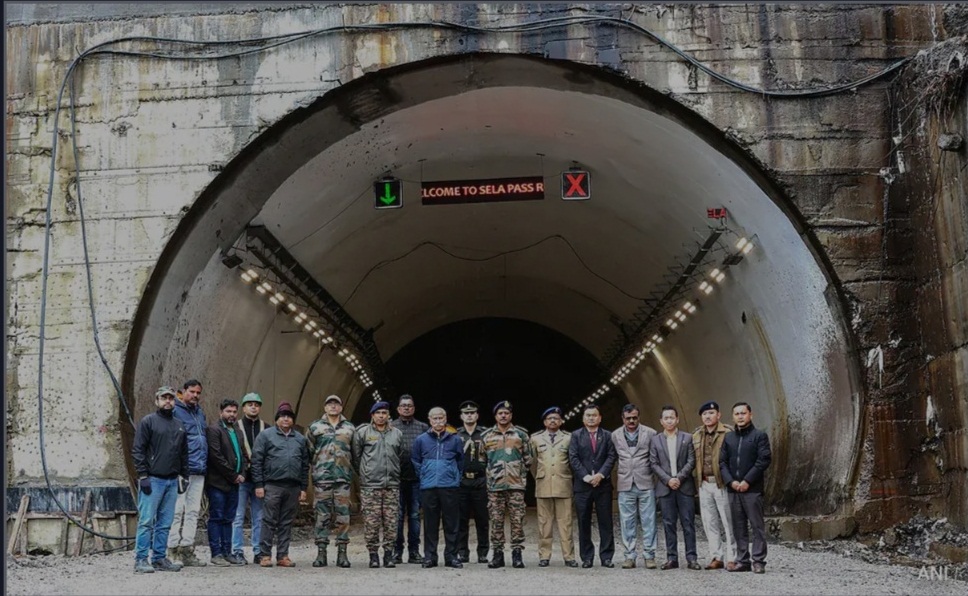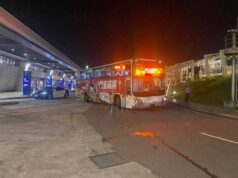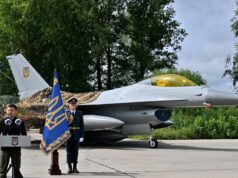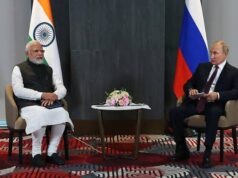Sela Tunnel : A National Exoneration of Decades of Inertia
“You are an unsung hero of someone’s life; finish your story for them. Don’t give up” —Helen Louna
Post by Col Satish Singh Lalotra

A person should not be too honest. Straight trees are cut first and honest people are screwed first—Chanakya the great. Soldiers fit the above saying of this Machiavelli of India to the core. Indian army soldiers too are no exception to this above truth. No wonder in the bleak months following the autumn of 1962, the soldiers followed their commanders to doom in the war that was fought in the high Himalayas against an adversary that was as wily and evasive as it could be. Not that our soldiers had forgotten the golden tenets of war and tactics that were equally remembered by our adversaries who were high on the tonic of tenets of ‘Art of war’ as enunciated by their master tactician ‘Sun Tzu’. It was the combination of decades of monumental inertia heaped by country’s tardy Geo-political thinking in border infrastructure that put paid to the armed forces valour, though it was equally redeemed no matter in later stages of this Himalayan war with guts, blood and individual glory by the redoubtable Jawan stretching from the icy heights of Rezang La to the frigid environs of Sela pass of the present day Arunachal Pradesh (NEFA).
One such dot of ignominy that remains ever on the firmament of armed forces of India during this short border war of 1962 was at a place called as ‘Sela pass’ a formidable mountainous elevation of 4170 meters( 13,700 feet) connecting the Buddhist town of Tawang to Dirang and Guwahati. Despite perched on a commanding height and also an equally formidable defensive position this place was surrendered for a lark to the advancing PLA(People’s liberation army of China) with our own efforts falling like nine pins, a subject which is off course beyond the remit of this article of mine. The road passing through this mountainous pass was the life line for our forward troops who were hamstrung due to the pass getting blocked due to excessive snowfall and its treacherous terrain all around. But, no longer now.
On 09th of March 2024, the PM MrModi has thrown open the iconic ‘Sela tunnel’ to the nation that will provide an all –weather connectivity to Tawang bordering china. But come to think of it— it has taken 62(sixtytwo) long years to bridge this infra gap since the big guns fell silent on both sides of the contentious ‘Mac-Mohan line’. Why has it taken more than six decades to redeem our commitment to the border people of erstwhile NEFA and more so compelling the armed forces to look over their shoulders towards Delhi for such a dire necessity? Will a self –respecting country be so oblivious to the basics of border infra of our NE that it just casts away its prime responsibility into a dust bin without a care in the world? This is more preposterous when seen in the light of the fact that the first PM Mr Nehru himself had formulated a border area development committee in the early 1950s with Major Gen Himmat sinhji as its head; the said committee was to go over the recommendations as were suggested by the first home minister Sardar Patel in one of his letters written to the PM Nehru way back in 1949 as also take up new and newer ways to combat the Chinese intransigence across the Himalayan frontier.
Coming to the topic as such straightway , this all too important mountainous tunnel at ‘Sela pass’ is a strategic tunnel that envisaged an expenditure of rupees 697 crores whose foundation was laid by the present PM Mr Narendra Modi way back in February 2019 ,but the work got delayed due to various reasons including the COVID Pandemic. The project comprises of two tunnels,with the first being a single –tube tunnel of 980 meters in length and the second being 1.5 kms long with an escape tube for any emergencies.The BRO (Border roads organization) which is spearheading this project has been in the process of constructing a 7.1 km of approach roads to the tunnel 1 (one) and 340 meters of approach road to tunnel 2(two) and 1.3 km of road between the two tunnels.
This iconic tunnel has been constructed with the ‘New Austrian tunneling method’ (NATM) with the final breakthrough in tunnel 1 was recorded on January 2022. When the tunnel was being constructed in the final phases of installations, a major cloudburst took place in the higher reaches in July last year delaying the construction of the approach roads and thereby, the expected time frame for completion of the project too. The BRO also envisages to construct a 100 meter long departmental tunnel on the ‘Sela-Chharbrela-Banga-Janga Gompa( BJG) axis for the organization’s use to transport men, materials and machines. There is also a proposal to construct a Rs 10,000 –crore underwater tunnel under the Brahmaputra river from Tezpur but the project is still under consideration by the union government and a final decision is yet to be taken. This tunnel is the longest ‘Bilane tunnel’ in the world at more than 13,000 feet. It is also the first road tunnel of the entire NE India that will connect with NH-13 component of ‘Trans –Arunachal highway’ system. It will be connected with NH-13 by a new 12.4 km road that will reduce the distance between Dirang and Tawang by 10 kms.
‘Project Vartak’ of BRO which is force behind this infra of national importance has ensured that this tunnel enhances the IA’s capabilities in combating the threat of china’s ‘Western theatre command’ opposite India’s eastern sector of the LAC. It will cut the travel time from the Indian army’s IV corps headquarter at Tezpur to Tawang by at least one hour and also help keep NH-13 an all-weather road to access Tawang which usually gets disconnected during the winter months. The BRO is also improving the road from ‘SangestarTso’ ( N of Tawang) to Bum La pass near the Mac-Mohan line . The broad time line of this project since its inception till its completion is as under—
- February 2018— Project announced in 2018-19 union budget.
- February 2019—-Foundation stone laid by PM Modi . Tunnel was to be made ready in 3 years by Feb 2022.
- April 2019—Construction work started.
- September 2019—Construction of approach road was ongoing and tunnel boring commenced by month end.
- 31 october 2019—First blast at tunnel 2.
- September 2020 —Disruption in the tunneling process due to COVID-19 PANDEMIC.
- July 2021— Excavation of the 980 meters escape tube completed in July 2021.
- Jan 2022 —Final breakthrough in tunnel 1.
- July 2023 —Cloud burst in the upper reaches of Sela massif thus delaying the construction of various approach roads for the tunnel.
- Jan- Feb 2024—Third party safety audit for the tunnel following the near disaster at the famous ‘Silkyara tunnel’ in uttrakhand last year.
- End Feb 2024—Third party audit completed with the tunnel declared as safe.
- March 2024—inauguration of the tunnel.
The BRO has also constructed the now operational ‘Nechiphu tunnel’ in West Kameng division’ of the state at an altitude of 1630 meters. It was inaugurated by the RM Rajnath Singh in September last year. Though a host of such important border infra projects have been undertaken in the NE of India, it will be pertinent to mention here that almost a majority of them have been under the present dispensation; for example the ‘Arunachal frontier highway’ and officially notified as the NH-913 also called as ‘Bomdila-vijaynagar-highway( BVH) connecting the Bomdila airstrip ALG and HQ in northwest to vijaynagar airstrip ALG &HQ in the south west via Nafra HQ–Sarli HQ—Huri helipad ALG &HQ– –Nacho HQ—Mechuka airstrip &HQ– –Monigong HQ—Jido( Tuting airstrip ALG& HQ) –Hunli HQ—Hayuling airstrip ALG HQ-Chenquenty-Hawai HQ-Miao HQ etc.
Similarly the ‘East-west Industrial corridor highway, Bhalukpong –Tawang railway are all pointers towards this end. My few pointers to the readers of this article that hold importance are as under—
- After the 1962 border war, was any direct or indirect embargo placed by our northern adversary (read china) towards infra development on us?
- If yes, what were the compelling reasons for the same?
- If no ,then why was such a pussy footed approach applied by the successive governments of the day for border development stretching from Ladakh to Arunachal Pradesh since independence; more so when seen from the angle as depicted by the 1950s Himmatsinghji committee report?
With repeated Chinese incursions taking place notably like the 1986 Sumdrong-chu , Barahoti in Garhwal, Shipki La in Himachal Pradesh, Depsang plains , Doklam plateau overlooking the Siliguri corridor over the years ultimately culminating in a crescendo in May-June 2020 at Galwanclashes ;why a nuanced approach towards border infra development? Why not adoption of a crash course?
There are many more such probing questions that go a begging when it comes to national security and can’t be covered in a short article of this nature. My main aim of this write up was to focus on certain nagging questions related to this Sela area that I had the opportunity to fly upon via the ARC hepters way back in 1994 going for our fwd posts at ‘Bomdir just short of Bomdila. That time we used to ascertain the weather prevailing at Sela top and only on confirmation of ‘All clear’ at Sela top we used to board the hepters from Doom Dooma . The all-weather Sela tunnel is a shot in the arm for the road travellers heading in that direction now. In any case with both the Asian giants still locking horns for the last 4 years in a row now on the frigid environs of Ladakh, all is not honky-dory even in the NE.
Well it was not so even before, but now the gloves are off with both the countries sparing not a moment to push the other side into a cliff hanger situation which has now spread into other realms of Sino-Indian relations. It would do well for a country of India’s size not to under-punch when engaging its intrepid northern neighbor. Both the countries backed by their centuries of civilizational sagacity cannot back off when it comes to their very being in the comity of world affairs. The only area where this shadow boxing can turn the tables on either side is understanding each other’s concerns with a shared empathy for other’s growth and development. Not that India didn’t do that too. ‘Hindi-Chini-Bhai-Bhai’ of the 1950s is a grim reminder that our northern neighbor doesn’t understand this policy of ours and considers it too pacifist for its consumption. India on its part would do well to mirror Chinese intentions by developing its border infra so as to vouchsafe its own security on its own terms. The ‘Sela tunnel’ is one such attempt towards achieving this overall aim.




